Breakthrough in spintronics
For the first time in history, scientists from IBM Research and the leading European educational and research center ETH Zurich received images of the formation of a stable spin helix in a semiconductor.
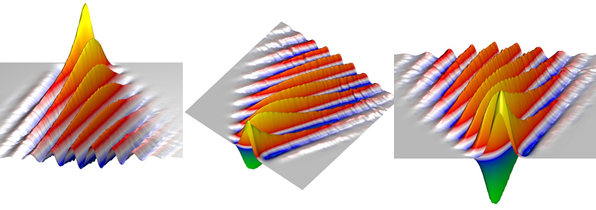
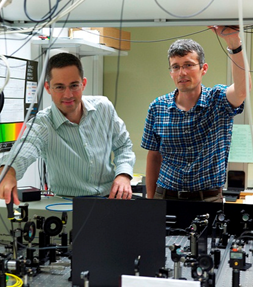
')
“Usually, these electron spins quickly change and lose their orientation. But for the first time we managed to find a way to align their properties in a regular cycle of spin changes. ”
Spintronics (or spin electronics) is a fairly young area of modern physics, attracting many researchers with promising practical applications.
Its difference from traditional electronics is that if charges move in ordinary electric current, the spins of electrons move in electronics of a new generation.
Electron spin (intrinsic angular momentum) is an internal characteristic of an electron, which has a quantum nature and is independent of the motion of an electron. The electron spin can be in one of two states — either spin-up (the direction of the spin coincides with the direction of magnetization of the magnetic material) or spin-down (the spin and magnetization are differently directed).

The "rotation" of an electron and its upper and lower orientation encodes logical bits in the system. When coding bits, scientists propose to focus on the physical space in which the electron is located. An electron whose axis is directed conditionally upwards is taken as a logical unit, and an electron whose axis is directed conditionally downward is a logical zero.
What is the mission of spintronics?
In the next ten to fifteen years, silicon processors will reach their limits. Therefore, scientists are already looking for new physical principles on which high-speed devices with low power consumption and heat generation will be built.
In spintronic devices, the flipping of a spin requires practically no energy, and in the intervals between operations, the device is disconnected from the power source. If you change the direction of the spin, then the kinetic energy of the electron will not change. This means that almost no heat is generated.
Experts identify three main directions of development of spintronics: a quantum computer, a spin field-effect transistor and a spin memory.
According to scientists from IBM, electrons change their backs very quickly - about 100 picoseconds are spent on switching (1 picosecond - one trillionth of a second). And therein lies the main problem - 100 picoseconds is not enough for the microchips to fix the state change in the system.

Researchers from IBM have developed a method of electron synchronization, increasing the spin time by 30 times - up to 1 nanosecond (which is equal to the microprocessor cycle with a frequency of 1 GHz).

The attention of scientists was attracted by a fact not previously described by physicists — as electrons rotate in semiconductors, their spins move tens of micrometers while rotating simultaneously, like waltzing pairs.
“If at the beginning of the circle in the waltz the faces of all women are turned in one direction, then after a while the rotating pairs will turn out to be looking in different directions.
Now we were able to fix the speed of rotation of the dancers and tie it to the direction of their movement. It turns out the perfect choreography - the faces of all the dancing women in a certain area of the site are directed to one side. ”
 In the IBM Research laboratories, scientists used ultrashort laser pulses to observe the movements of thousands of electron spins that were launched into rotation at the same time within the ultralow region.
In the IBM Research laboratories, scientists used ultrashort laser pulses to observe the movements of thousands of electron spins that were launched into rotation at the same time within the ultralow region.
IBM researchers used a time-resolution scanning microscope technique and obtained images of a synchronous "waltz" of electron spins. Synchronization of the spin rotation of electrons allowed to observe their movement over distances of more than 10 microns (one hundredth of a millimeter), which increased the possibility of using the spin for processing logical operations - fast and economical in terms of energy consumption.
The reason for the synchronous motion of spins is the so-called spin-orbit interaction, the physical mechanism that links the spin with the motion of the electron. An experimental semiconductor sample was made on the basis of gallium arsenide (GaAs) by scientists from ETH Zurich. Gallium arsenide, a semiconductor group III / V, is widely used in the production of devices such as integrated circuits, infrared LEDs and high-performance solar cells.
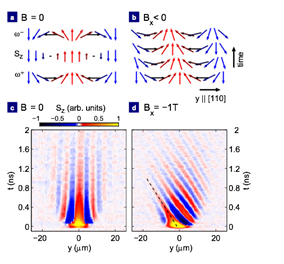
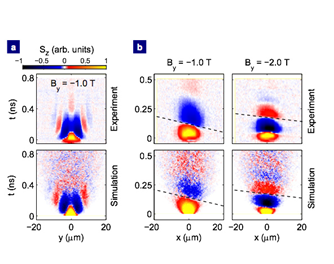
Exiting spin electronics from laboratories to the market is still an extremely difficult task. Today's research is carried out at very low temperatures, at which the spins of electrons interact minimally with the environment. In particular, the research work described here was conducted by IBM scientists at a temperature of 40 degrees Kelvin (-233 Celsius or -387 Fahrenheit).
But, in any case, the new discovery gives control over the movement of magnetic "charges" in semiconductor devices and opens up new opportunities and prospects for creating small-sized and energy-saving electronics.
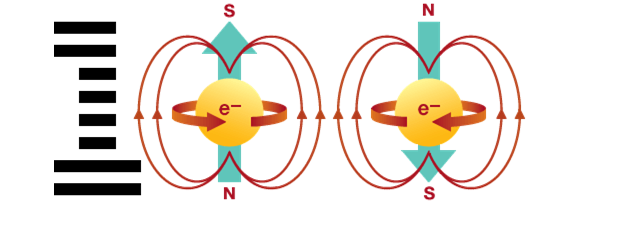


')
“Usually, these electron spins quickly change and lose their orientation. But for the first time we managed to find a way to align their properties in a regular cycle of spin changes. ”
Little about spintronics
Spintronics (or spin electronics) is a fairly young area of modern physics, attracting many researchers with promising practical applications.
Its difference from traditional electronics is that if charges move in ordinary electric current, the spins of electrons move in electronics of a new generation.
Electron spin (intrinsic angular momentum) is an internal characteristic of an electron, which has a quantum nature and is independent of the motion of an electron. The electron spin can be in one of two states — either spin-up (the direction of the spin coincides with the direction of magnetization of the magnetic material) or spin-down (the spin and magnetization are differently directed).

The "rotation" of an electron and its upper and lower orientation encodes logical bits in the system. When coding bits, scientists propose to focus on the physical space in which the electron is located. An electron whose axis is directed conditionally upwards is taken as a logical unit, and an electron whose axis is directed conditionally downward is a logical zero.
What is the mission of spintronics?
In the next ten to fifteen years, silicon processors will reach their limits. Therefore, scientists are already looking for new physical principles on which high-speed devices with low power consumption and heat generation will be built.
In spintronic devices, the flipping of a spin requires practically no energy, and in the intervals between operations, the device is disconnected from the power source. If you change the direction of the spin, then the kinetic energy of the electron will not change. This means that almost no heat is generated.
Experts identify three main directions of development of spintronics: a quantum computer, a spin field-effect transistor and a spin memory.
According to scientists from IBM, electrons change their backs very quickly - about 100 picoseconds are spent on switching (1 picosecond - one trillionth of a second). And therein lies the main problem - 100 picoseconds is not enough for the microchips to fix the state change in the system.
No matter what

Researchers from IBM have developed a method of electron synchronization, increasing the spin time by 30 times - up to 1 nanosecond (which is equal to the microprocessor cycle with a frequency of 1 GHz).

The attention of scientists was attracted by a fact not previously described by physicists — as electrons rotate in semiconductors, their spins move tens of micrometers while rotating simultaneously, like waltzing pairs.
“If at the beginning of the circle in the waltz the faces of all women are turned in one direction, then after a while the rotating pairs will turn out to be looking in different directions.
Now we were able to fix the speed of rotation of the dancers and tie it to the direction of their movement. It turns out the perfect choreography - the faces of all the dancing women in a certain area of the site are directed to one side. ”
 In the IBM Research laboratories, scientists used ultrashort laser pulses to observe the movements of thousands of electron spins that were launched into rotation at the same time within the ultralow region.
In the IBM Research laboratories, scientists used ultrashort laser pulses to observe the movements of thousands of electron spins that were launched into rotation at the same time within the ultralow region.IBM researchers used a time-resolution scanning microscope technique and obtained images of a synchronous "waltz" of electron spins. Synchronization of the spin rotation of electrons allowed to observe their movement over distances of more than 10 microns (one hundredth of a millimeter), which increased the possibility of using the spin for processing logical operations - fast and economical in terms of energy consumption.
The reason for the synchronous motion of spins is the so-called spin-orbit interaction, the physical mechanism that links the spin with the motion of the electron. An experimental semiconductor sample was made on the basis of gallium arsenide (GaAs) by scientists from ETH Zurich. Gallium arsenide, a semiconductor group III / V, is widely used in the production of devices such as integrated circuits, infrared LEDs and high-performance solar cells.


Exiting spin electronics from laboratories to the market is still an extremely difficult task. Today's research is carried out at very low temperatures, at which the spins of electrons interact minimally with the environment. In particular, the research work described here was conducted by IBM scientists at a temperature of 40 degrees Kelvin (-233 Celsius or -387 Fahrenheit).
But, in any case, the new discovery gives control over the movement of magnetic "charges" in semiconductor devices and opens up new opportunities and prospects for creating small-sized and energy-saving electronics.

Source: https://habr.com/ru/post/151487/
All Articles